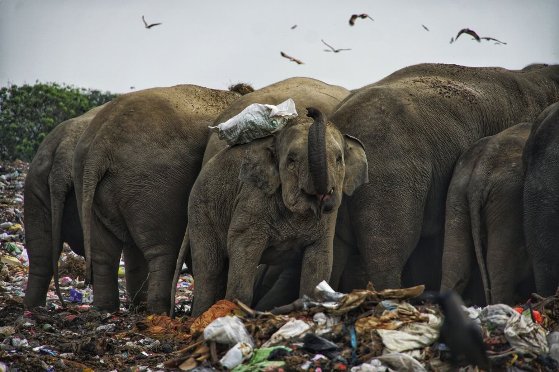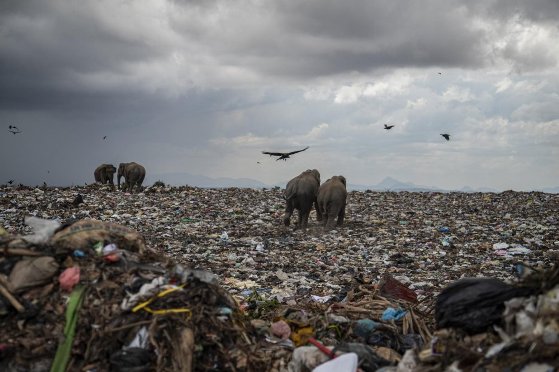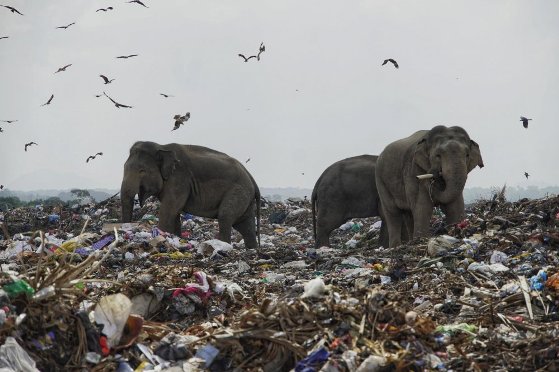Eating garbage, elephants die a painful death
Sri Lankan photographer Tharmapalan Tilaxan’s photo of a herd of elephants eating from a rubbish dump won first prize in this year’s Royal Society of Biology photography competition
By Tharmapalan Tilaxan
This is what you see when I photographed elephants looking for food in a huge garbage mountain in Oluvil in the Ampara district. The easiest way to remove garbage in Sri Lanka is to go to a forest somewhere and dump it. Becoming addicted to the taste of the food in the garbage, elephants in the surrounding areas completely change their lifestyle and these garbage dumps become their dining table.
When the elephants smell food, it doesn’t matter if it’s covered in polythene, wrapped in a paper or in a plastic vessel; they swallow everything. The waste is then trapped inside the stomachs of the elephants, who have a very sensitive digestive system, and they die a painful death.
In Sri Lanka, more than 300 elephants die a year due to eating garbage like this.
The Oluvil dump is not the only garbage mountain – there many others around the country. Until a permanent solution is found to dispose of garbage and prevent elephants from eating it, they will continue to die these horrible deaths.
It’s not a problem that affects only elephants. Their changing lifestyle affects the entire ecosystem. Just look at these photographs, you will feel sad and ashamed when you see these giant beings rummaging in the garbage.
I exhibit my social issues-based work. The exhibitions on Gurunagar and the Oluvil elephants’ story are linked to environmental and social issues. The Gurunagar exhibition focused on environmental pollution and problems of coastal area people. The Oluvil elephant story is related to how elephants face difficulties because of environmental pollution and deforestation. Both are a long-term projects to create awareness and self-realization in people.
Being a photography artist in Jaffna, I perform the dual roles of working as archivist and artist. I’m collecting old photographs and doing documentation on Sri Lankan culture and environment. I have started to build up an archive on the history of Jaffna.
I place importance on the composition of photographs that are visually pleasing and give me more depth, the chance to play with my ideas and technical aspects. They aren’t just the standard and expected shots. They are something different and hide stories in them. With my camera, I believe in capturing unexpected moments and documenting them through my vision. Special moments are transformed into a story.





-Tharmaplan Tilaxan is a Jaffna-based freelance photographer and storyteller who has been travelling throughout Sri Lanka’s North and East, in search of inspiration in the places and people he encounters. This article was based on his photo exhibition, ‘The Story Of Olivil Pallakkadu Elephants’ that was recently held in Jaffna to highlight the impact and consequences of the improper disposal of garbage and was originally featured on groundviews.org


